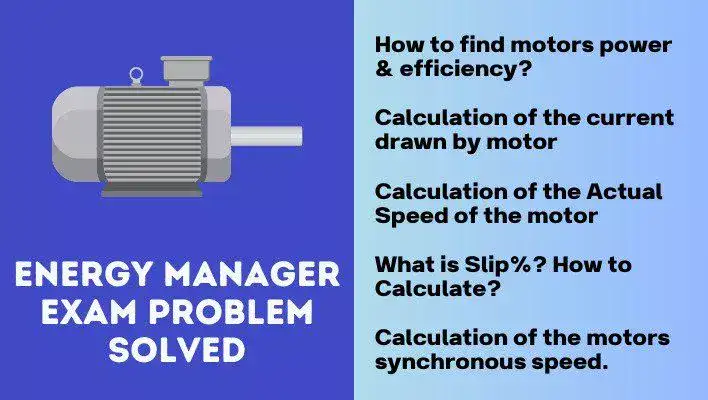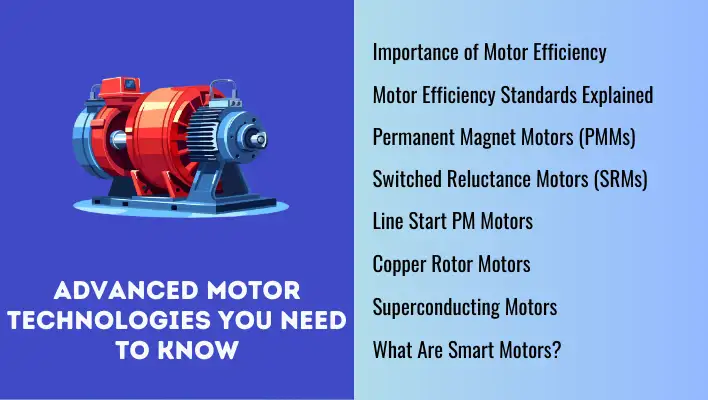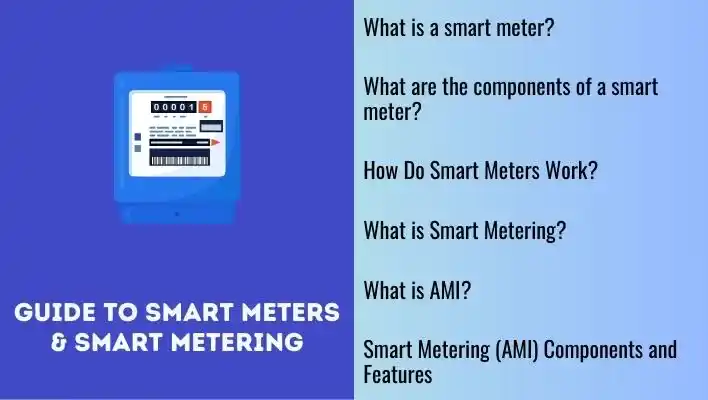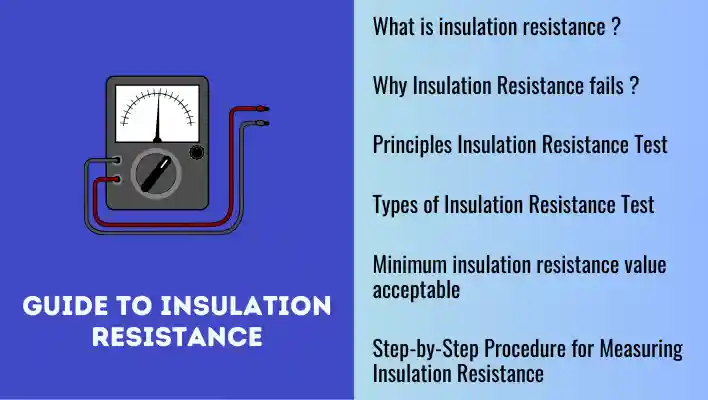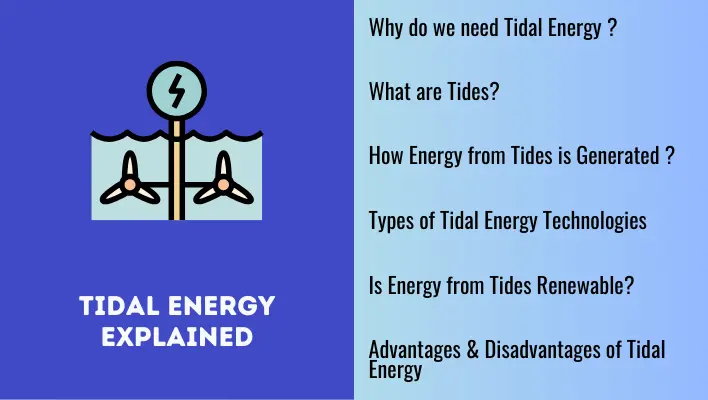Problem
A 15 kW, 415 V, 4 pole, 50 Hz, 3 Phase squirrel cage induction motor has a full load efficiency of 92% and power factor of 0.89. Find the following if the motor operates at full load rated values.
- input power in kW
- current drawn by the motor
- RPM at a full load slip of 0.8%
Before going ahead with solving the problem lets understand what Output Power, Input Power and Efficiency of motor means.

Output Power
Motor is one of those rare electrical equipment which is rated for its output power rather than its electric input power.
As you can see in the question Power (P) = 15 kW is given and it is asking us to find the input power.
So, Power (P) = 15 kW is the output power.
Output power denotes the mechanical energy supplied by a motor, achieved by delivering necessary torque to the load at its specified speed.
It is the power that is used to perform the work or function for which the motor was designed and is usually expressed in horsepower (hp), watts (W), or kilowatts (kW).
Also Read: Calculate motor temperature rise from unbalanced voltage | Energy Manager Exam question
So what is input power?
The input power of an electric motor refers to the electrical power that is supplied to the motor from the power source.
It is the power that is consumed by the motor to produce mechanical power (output). Input power is usually measured in watts (W) or kilowatts (kW).
In summary, the input power of a motor is the electrical power supplied to the motor, while the output power is the mechanical power delivered by the motor to the load.

Efficiency
Further, efficiency of the motor is the ratio of the output power to the input power.
[latex]Efficiency (η) = \frac{Output Power}{Input Power}[/latex]
When electric motors transform electrical energy into mechanical energy, they lose some energy, which usually dissipates as heat.
This means that the mechanical power output of the motor is always less than the electric power input. Therefore, the motor’s efficiency is always less than 100%.
Also Read: Energy Manager Exam | Co-generation power plant Numerical problem with solution
Solution
Coming back to the problem statement the given parameters are:
- Power (P) = 15 kW
- Voltage (V) = 415 V
- Number of poles (Pole) = 4
- Frequency (f) = 50 Hz
- Efficiency (η) = 92%
- Power Factor (PF) = 0.89
- Slip (s) = 0.8%
Input power
| So to calculate the input power you have to use efficiency formula, |
| [latex]Efficiency (η) = \frac{Output Power}{Input Power}[/latex] |
| [latex]0.92 = \frac{15 KW}{Input Power}[/latex] |
| Therefore, [latex]Input Power = \frac{15 KW}{0.92}[/latex] |
| Input power = 16.30 KW |
Calculation of input current.
Input current refers to the electrical current that is drawn from the power source and supplied to the motor.
It accounts for any losses in the electrical system, such as resistance in wires and is typically measured in amperes (A).
| The consumed electrical power of the motor is defined by the following formula. |
| [latex]Power Input (watts) = \sqrt{3} \times Voltage \times Current \times Cos\emptyset[/latex] |
| [latex]16.30 KW = \sqrt{3} \times 415 V \times Input Current \times 0.89[/latex] |
| Therefore, |
| [latex]Input Current (I) = \frac{1.732 \times 415 V \times 0.89}{16.30 \times 1000}[/latex] (Multiplied with 1000 to convert Input power from KW to Watts.) |
| Input Current (I) = 25.46 Amps |
Also Read: How to find apparent and reactive power of motor | Energy Manager exam question
Calculation of RPM at a full load slip of 0.8%
To find the full load rated speed i.e. actual speed in RPM at full load, first you have to calculate the synchronous speed of the motor.
The synchronous speed of a motor is the speed at which the magnetic field created by the motor’s stator winding rotates.
In other words, it is the speed at which the magnetic field of the motor rotates with a constant speed and frequency, which is determined by the number of poles in the motor and the frequency of the power supply.
The synchronous speed is directly proportional to the frequency of the power supply and inversely proportional to the number of poles.
For a given frequency, the higher the number of poles, the lower the synchronous speed, and vice versa.
| The synchronous speed is given by the following expression, |
| [latex]Ns = \frac{120f}{P}[/latex] |
| Ns = Synchronous speed in RPM |
| F = Frequency |
| P = Number of poles |
| [latex]Ns = \frac{120 \times 50}{4}[/latex] |
| Ns = 1500 RPM |
Slip
Now, the synchronous speed is a theoretical speed that can only be achieved if there is no slip between the rotating magnetic field and the rotor of the motor.
However, in practice, there is always some degree of slip, which means that the actual speed of the rotor is slightly lower than the synchronous speed.
The difference between the synchronous speed and the actual speed of the rotor is called the slip.
| To calculate the actual speed of the motor at full load, you have to use the following formula of slip, |
| [latex]\% slip = \frac{Synchronous speed – Full load rated speed}{Synchronous Speed}\times 100[/latex] |
| [latex]0.8\% = \frac{1500 – Full load rated speed}{1500}\times 100[/latex] |
| [latex]Full load rated speed = 1500 – ({0.008\times1500})[/latex] |
| Full load rated speed = 1500 – (12) |
| Full load rated speed = 1488 RPM |
Therefore, at full load the motor draws an input power of 16.30 kW, a current of 25.46 A and operates at a speed of 1488 RPM with a slip of 0.8%.

